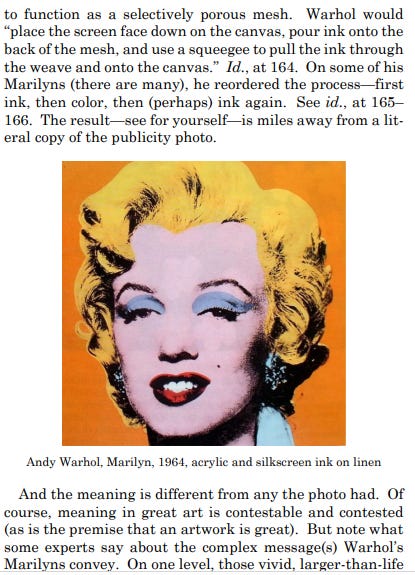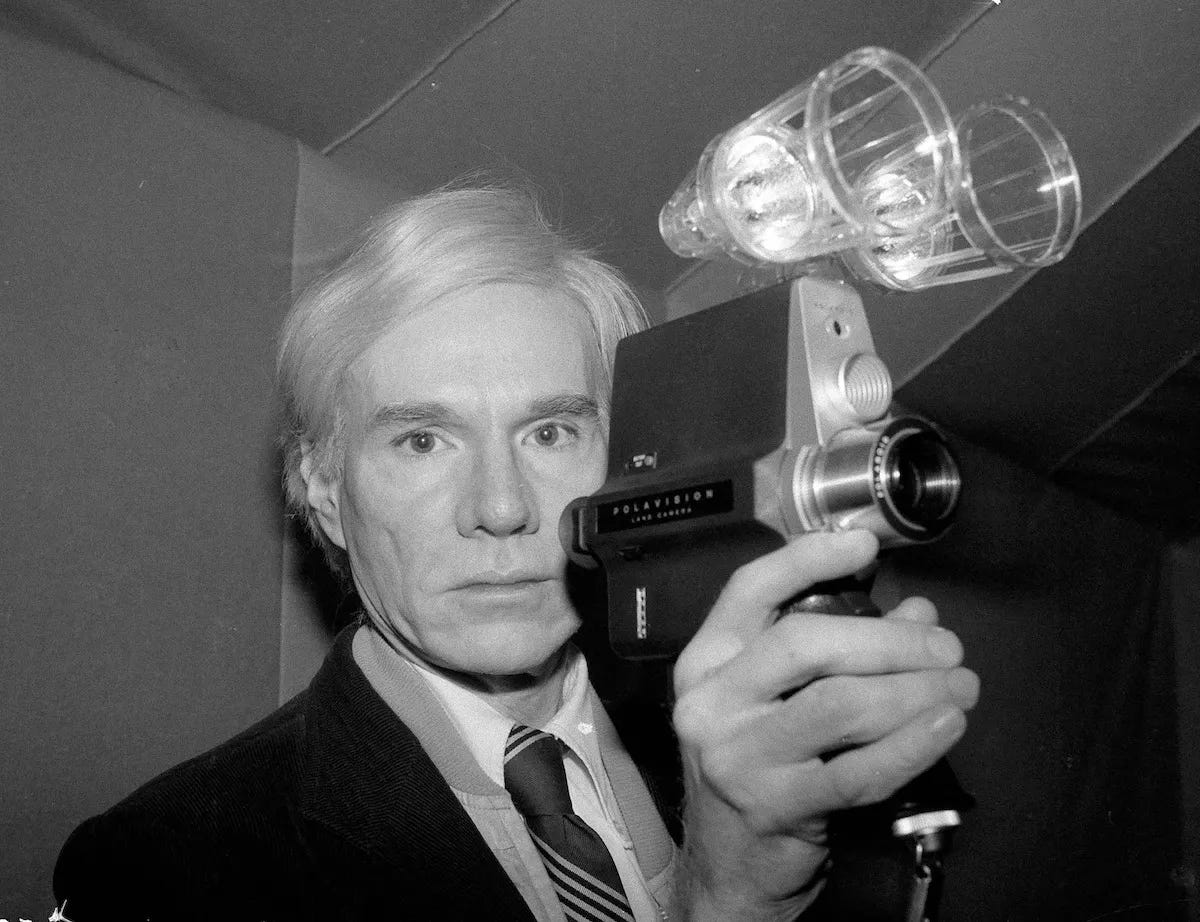Andy Warhol Foundation for the Visual Arts Inc. v. Goldsmith et al. is a landmark 2023 Supreme Court decision concerning copyright law and the “fair use” exception. We have two amazing guests in conversation to discuss it. Adam Weinberg is the Director of the Whitney Museum, and the smartest person about art that I know. Deborah Kass is a brilliant artist, and some of her most famous work plays on Warhol. They are the ideal guests to discuss how this decision will transform the art world — and guide us through a vicious debate between Justice Sotomayor (for the majority) and Justice Kagan (for the dissent, joined by Chief Justice Roberts).
To understand what’s going on, first know that the Copyright Act gives artists a number of rights intended to preserve and promote creative expression. Included among these are the right to reproduce copyrighted work, the right to create derivative works, and the right to display copyrighted work in a public setting.
However, artists do not have absolute control over their work. In 1976, Congress passed a law stating that the use of a copyrighted work “for purposes such as criticism, comment, news reporting, teaching…scholarship, or research” is not an infringement of copyright. This is known as the “fair use” exception to the Copyright Act.
To determine if a piece qualities as “fair use,” the statute offers four factors for consideration: “The purpose and character of the use, including whether such use is of a commercial nature or is for nonprofit educational purposes; the nature of the copyrighted work; the amount and substantiality of the portion used in relation to the copyrighted work as a whole, and; the effect of the use upon the potential market for or value of the copyrighted work.” If a new piece of art alters an original work to such an extreme that, under factor one, the “purpose and character” of the new piece is altogether different from the original, it is said to be “transformative.”
Enter Andy Warhol. In 1984, Vanity Fair commissioned Warhol to create a portrait of Prince for their magazine cover. The portrait was to be based on a photo taken by photographer Lynn Goldsmith; Vanity Fair had paid Goldsmith $400 for the photo and agreed to use it only for the cover of the magazine. However, Warhol went on to create 15 separate portraits of Prince, each of which used the photo as inspiration. In 2016, the Andy Warhol Foundation (AWF) sold Condé Nast the rights to one of these portraits. Goldsmith received no compensation, and when she heard about the transaction, she demanded payment. AWF responded by launching a lawsuit. You can see Goldsmith’s original photo on the right, and what Warhol did on the left.
AWF argued that Warhol’s rendition of Prince (titled Orange Prince) was so transformative that, under the first factor for fair use, the portrait acquired an entirely new “purpose and character” and was therefore legal. Lawyers for Goldsmith disagreed. Thus, the decision centered around one, key question: Did the sale of Warhol’s portrait of Prince make fair use of Goldsmith’s photograph, particularly with respect to factor one of the Copyright Act’s “fair use” exception?
Writing for a 7-2 majority, Justice Sotomayor held that the Warhol Foundation committed copyright infringement when, in 2016, it sold the rights to a Warhol work (based on a photograph by Lynn Goldsmith) without compensating Goldsmith. In a blistering dissent, Justice Kagan argued that the Majority Opinion would have chilling effects on the creative process, limiting artists, musicians, writers, and others in their ability to create new and inspired works.
One of the things I love about this case is the way in which art figures hugely in the decision. Here are parts of Justice Kagan’s dissent that explain what Warhol was doing:
And she goes on to explain how art builds on past work at every turn:
I’m thrilled that listeners will get to hear Deborah Kass, one of the greatest living artists, and someone whose work appropriates Warhol (who in turn is appropriating others). This is the Red Deb of her’s that we discuss in the episode:
While it is too early to know exactly how the Supreme Court’s Warhol decision will play out, many experts see the case as a shift in the world of copyright law, opening the floodgates to more lawsuits and potentially hindering artistic creation across the country. It will be a fascinating next few years for copyright.
One last thing: I’m well aware that it’s hard to just listen to this episode without seeing the pictures. Next week’s copyright episode will be about music, not pictures, with the great guitarist and most sought after music writer today, Aaron Dessner. Together, they will give you a comprehensive look at how copyright law is impacting our lives, every day.





















